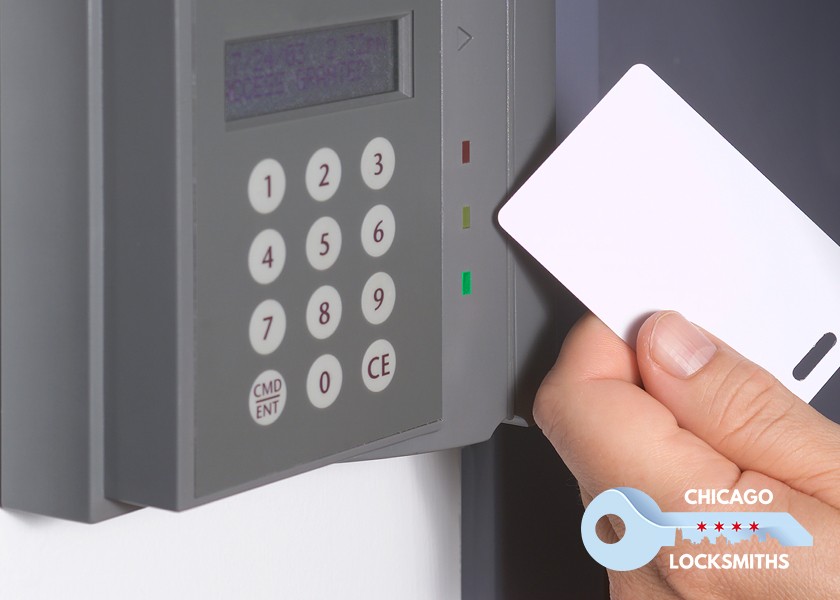Electronic locks add a great deal of safety and security to private property. All the very best safe makers these days create specialty electronic lock systems. Of course, different technology has different pros and cons – so the balance of what mechanical lock and what electronic lock you use dictates the true levels of security in your property. Here’s a brief guide to electronic locks, as prepared by the experts here at Chicago Locksmiths.
Electronic Lock Definition
Electronic locks get unlocked or resealed through electric current that either powers an electromagnet, a solenoid, or a motor, which in turn activate the lock in either fail-safe or fail-secure ways.
Fail Safe Locks
Fail Safe locks open on the sides of the ingress if there is a power outage, or if an emergency alarm is activated. This happens because the electric current is used to keep the door lock, and by taking out the power you will disengage the lock technology.
Advantages of Fail Safe Locks
- Protects workers during emergencies
- Allows large buildings with high traffic like schools or museums to maintain efficient and safe exits
Disadvantages of Fail Safe Locks
- If power is fully lost the building will no longer be secure.
- Pulling the emergency alarm will unlock all emergency exits.
- Will make buildings somewhat susceptible to crime during real or fake emergencies
Fail Secure Locks
These locks are the opposite of failsafe locks, and they use the electric current to retract the bolt. If there is a power outage, the bolt will remain locked.
Advantages of Fail Secure Locks
- Protects property during the time of emergency.
- An electromagnetic pulse or power failure won’t disengage the locks.
Disadvantages of Fail Secure Locks
- This isn’t ideal in large buildings that have lots of traffic because it can slow the entry of emergency responders.
- Evacuation can be blocked if door locks are fail secure.
Not all devices are found in both fails secure and failsafe varieties. The majority of the time the way that the lock functions determines if loss of electricity would open or lock the door or other entranceway. Other types of electronic locks are:
Electric Strikes
These strikes consist of a spring loaded keeper that moves the lock’s bolt. Only when given the right cde will the keeper move allowing the bolt to retract. It’s installed on the side of the door frame or on the inactive door in double door situations.
Electric Latch Retraction
These fail secure locks have bolt functions that retract when electricity is provided, and it will stay retracted unless the current stops or is turned off. The bolt stays securely in place when there’s no current, so preparations have to be made for potential emergencies. However, they can be programmed to be opened by fire alarms.
Electromechanical Locks
These locks are available as fail secure or fail safe and consist of a gear and latch system that can be manipulated with lock cylinders and/or electricity. The fail safe versions of these locks have the bolt extended with electric currents. If there is a power outage the door will stay unlocked. The fail secure version of these locks use electricity to retract the bolt where it will stay locked until power is restored.
Electromagnetic Locks
These common magnetic locks cannot be fail secure, meaning if there is a blackout they will unlock. They were actually originally manufactured for this purpose, to unlock in the event of power loss or when a fire alarm is pulled. When power is restored, the current will allow the door to magnetically bind itself to the metallic door frame with varying strength depending on how the magnetic coil is wound, and how much electricity is being deployed.

